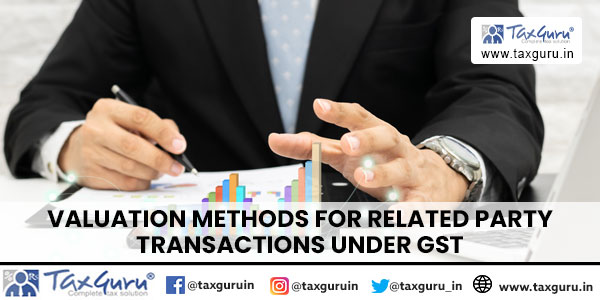Understanding the nuances of valuing transactions between related parties is crucial for ensuring compliance with the Goods and Services Tax (GST) regulations. This article delves into the different valuation methods prescribed under the GST Act, offering practical examples and a clear breakdown of each approach.
Definition of Related Parties
Under Section 15 of the GST Act, related parties encompass:
– Officers or directors of each other’s businesses.
– Legally recognized partners in business.
– Employer and employee.
– Persons who own, control, or hold 25% or more of the voting stock or shares directly or indirectly.
– Persons who control each other or are controlled by a third person.
– Members of the same family.
– Sole agents, distributors, or concessionaires.
Transaction Value and Its Limitations
According to Section 15(1), the transaction value should be the price actually paid or payable if the supply is between unrelated parties and the price is the sole consideration. However, when dealing with related parties, the direct method is typically not applicable due to the potential influence of the relationship on the transaction price.
Rule 28: Valuation for Related Party Transactions
Open Market Value (Rule 28(a))
The primary method for determining the value of supplies between related parties is the open market value. This is the full value in money, excluding taxes, that the recipient would pay under similar circumstances in an open market transaction.
Example:
If Company A supplies goods to its subsidiary Company B, and similar goods are sold to an unrelated party for ₹100,000, the open market value for the transaction with Company B should also be ₹100,000.

Value of Like Kind and Quality (Rule 28(b))
If the open market value is not ascertainable, the value can be based on the supply of goods or services of like kind and quality, involving a comparison with similar products or services.
Example:
If Company A supplies customized machinery to its related party Company B, and similar machinery is sold to an unrelated party for ₹150,000, this value is used for the related party transaction.
90% of Price to Unrelated Customer (Rule 28(c) Proviso 1)
If the goods are intended for further supply by the recipient, the supplier can value the supply at 90% of the price charged by the recipient to an unrelated customer.
Example:
If Company B resells the machinery received from Company A to an unrelated customer for ₹200,000, the value of the supply from Company A to Company B can be 90% of ₹200,000, which is ₹180,000.
Invoice Value as Deemed Open Market Value (Rule 28 Proviso 2)
When the recipient is eligible for full input tax credit, the value declared in the invoice is deemed to be the open market value.
Example:
If Company A sells raw materials to its related party Company B, and Company B is eligible for full input tax credit, the invoice value declared by Company A is accepted as the transaction value.
Rule 30: Cost-Based Valuation
If the value cannot be determined using the methods outlined in Rule 28, Rule 30 stipulates that the value shall be 110% of the cost of production or manufacture, or the cost of acquisition of such goods or services.
Example:
If the cost of production for the goods supplied by Company A to Company B is ₹70,000, then the transaction value will be ₹77,000 (110% of ₹70,000).
Rule 31: Reasonable Means Method
As a last resort, Rule 31 allows for the value to be determined by reasonable means consistent with the principles and general provisions of Section 15.
Example:
If none of the above methods are feasible, Company A and Company B can use a reasonable method to ascertain the value of the supply, ensuring it aligns with GST principles.
Practical Examples and Applications
Service Transactions
If a parent company provides management consulting services to its subsidiary, and similar services are offered to an unrelated party for ₹50,000, this price should be used for the related party transaction.
Goods Transfer
If a company transfers goods worth ₹100,000 to its related party, and the open market value for similar goods is ₹95,000, the latter value should be adopted.
****
Disclaimer: The information provided in this article is for educational and illustrative purposes only. While efforts have been made to ensure accuracy, the examples and scenarios presented are hypothetical and simplified for clarity. Readers are advised to consult relevant authorities or professionals for specific guidance on tax matters, as tax laws and regulations may vary by jurisdiction and change over time. The author disclaims any liability for any loss or damage arising directly or indirectly from the use of or reliance on the information provided in this article.





